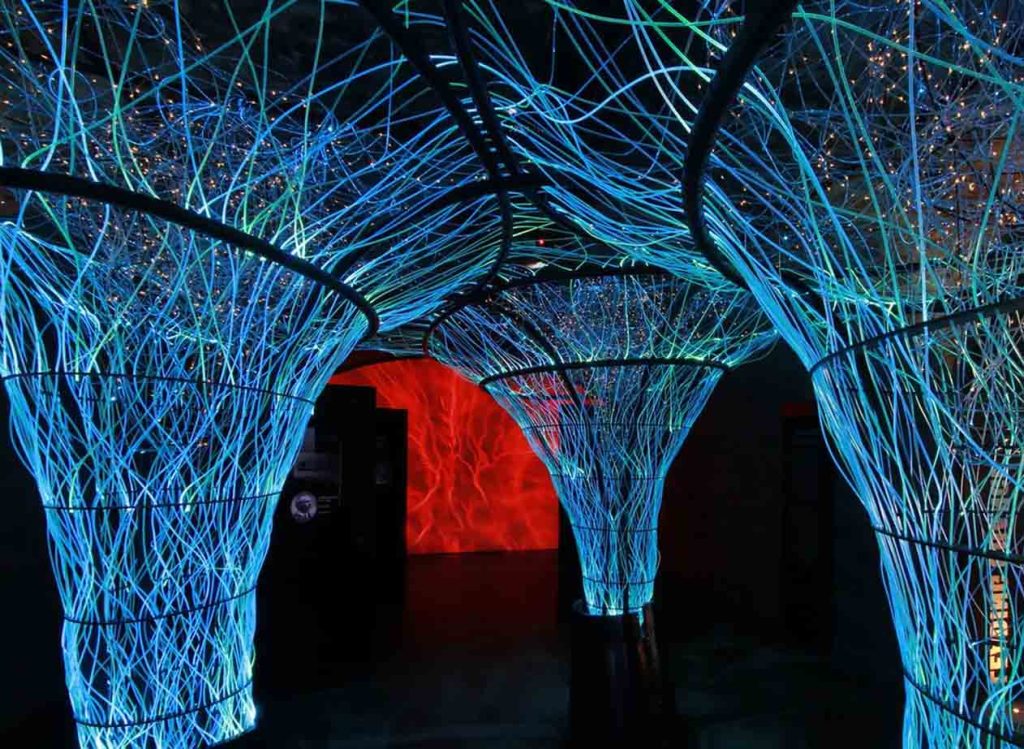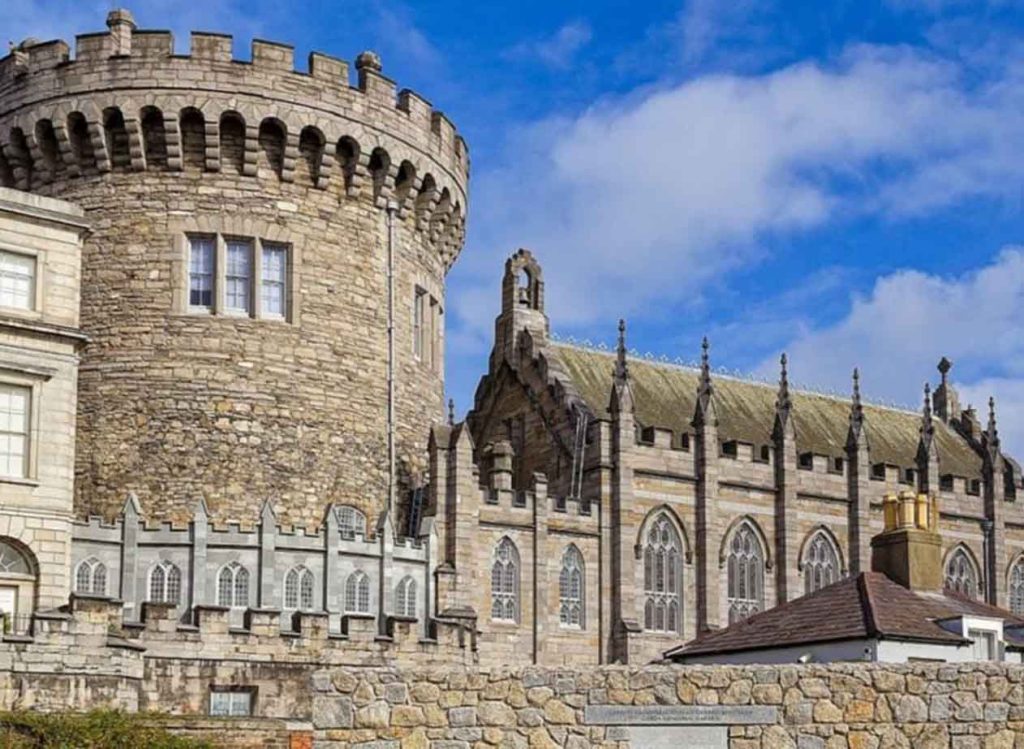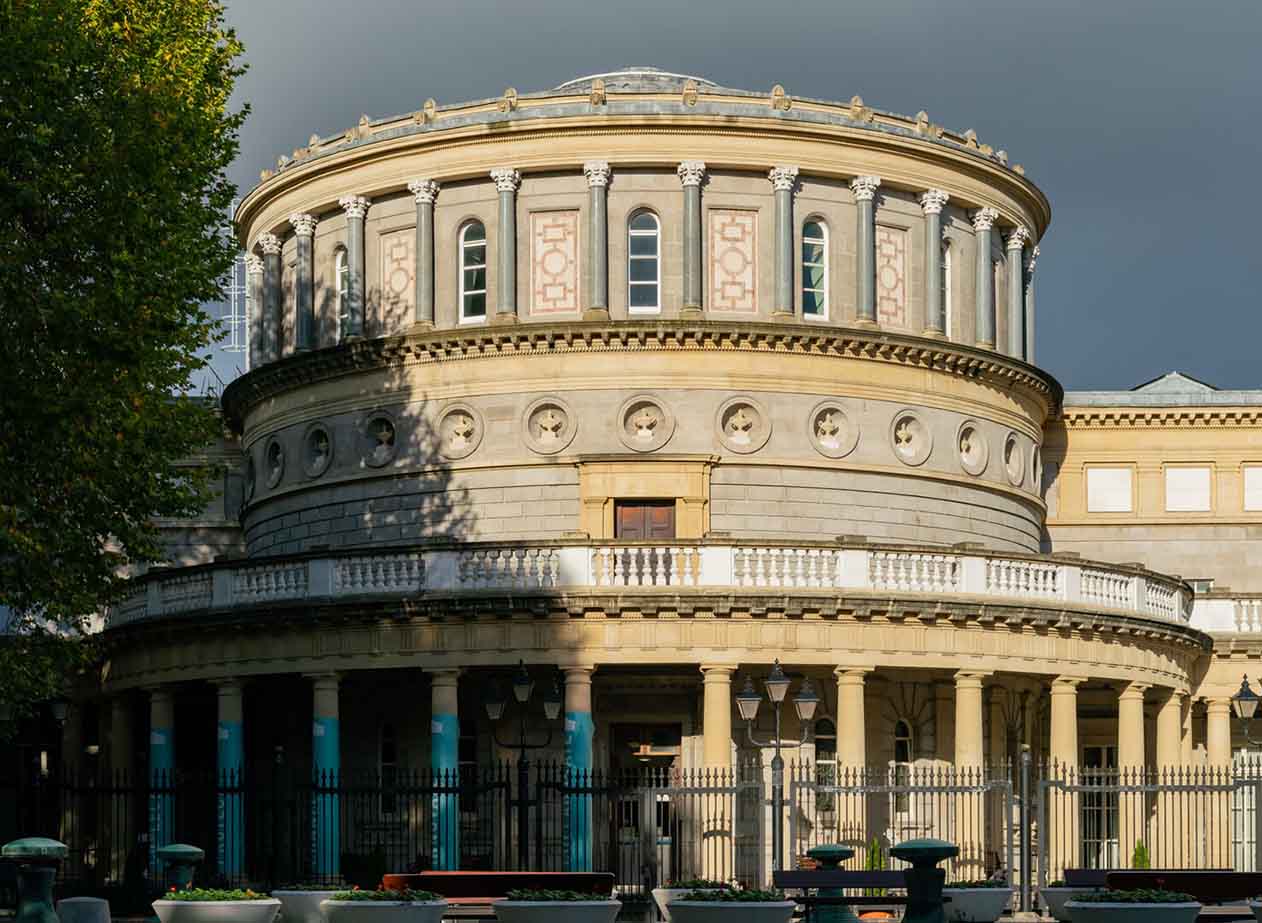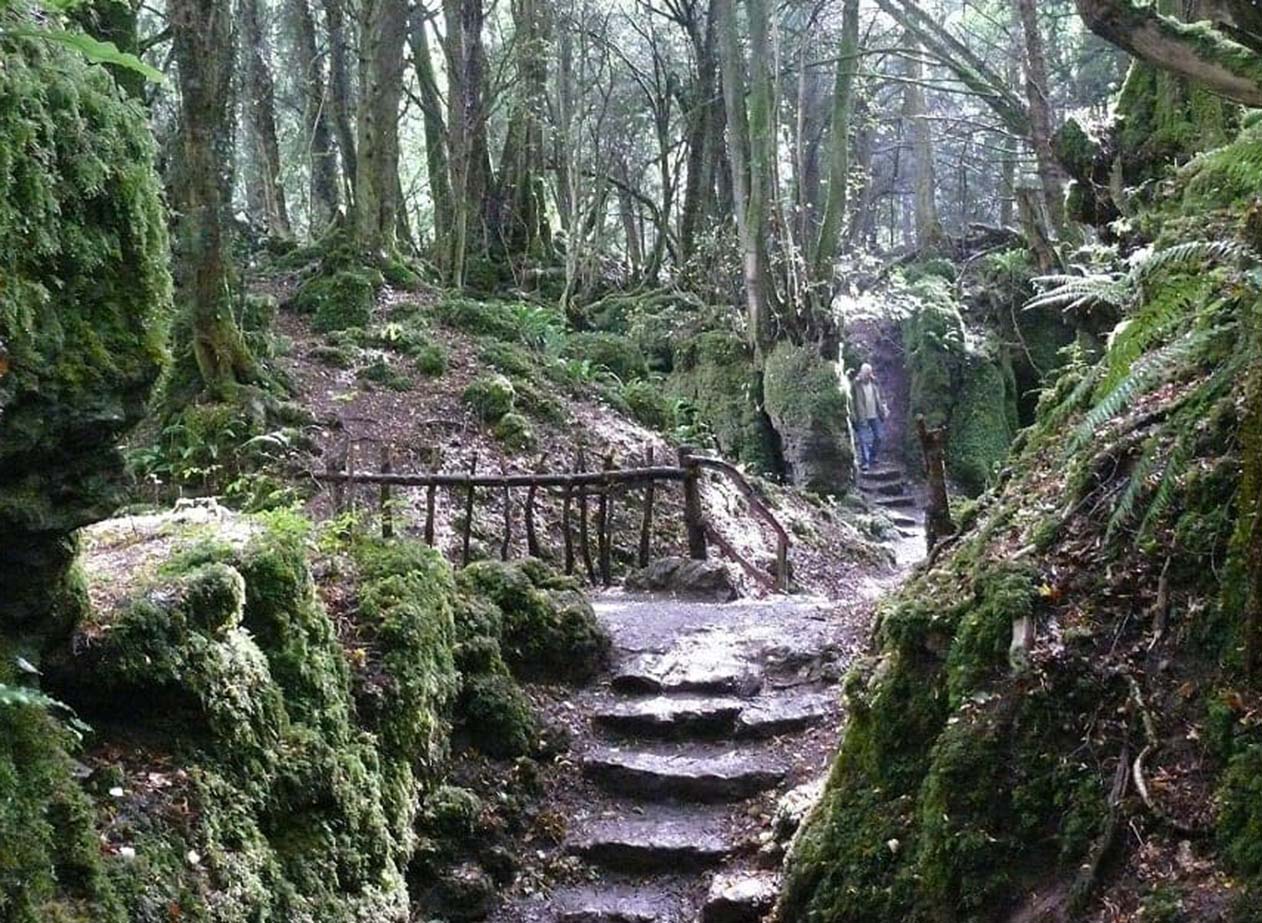Walking into Dublin, the capital of Ireland, is like walking into a living museum. Every brick in the streets and alleys carries the echo of history. If you want to truly touch the cultural context of this city, some museums in Dublin are a must-see starting point.
They are not just museums, but also a time corridor leading to the past, leading travelers through centuries of wind and frost to glimpse Ireland’s politics, society, folklore and independent spirit.
1. National Museum of Ireland – Archaeology: Echoes of Celtic Civilization
The treasures of ancient Ireland are hidden here
The National Museum Archaeology Branch is located in the south of Celtic Street and is one of the oldest and most representative museums in Dublin. The museum houses many archaeological discoveries spanning from 7000 BC to 1500 AD, especially famous for its Golden Age ornaments, Viking artifacts and Iron Age peat bog man remains.
Exhibition Highlights
Tara Gold Brooch: A luxurious ornament unearthed in the 8th century AD, it is hailed as the pinnacle of early Christian art.
Bog Bodies (peat man) exhibition hall: well-preserved human remains from the Iron Age, showing the sacrificial and criminal rituals of ancient Irish society.
Viking relics: show the prosperity of Dublin in the Viking Age, including jewelry, tools and navigation equipment, and truly restore the maritime civilization thousands of years ago.
Architectural charm and atmosphere
The neoclassical architectural style and the collection complement each other, and the magnificent dome ceiling and marble columns make people feel like they are in the art hall of the Roman Empire. Light and shadow penetrate the arched windows and fall on the surface of bronze and pottery, enhancing the solemn atmosphere of history.
Suitable for people and recommended time
Suitable for history lovers, humanities students and family tourists. It is recommended to arrange 2 to 3 hours to carefully read the civilization stories behind the exhibits.
Recommended booking platform
You can book the guided tour service in advance through platforms such as GetYourGuide, Tiqets or Klook to avoid queuing time during peak hours, and you can choose Chinese audio guide equipment to enhance the depth of understanding.
2. EPIC The Irish Emigration Museum: A Voyage of Emotion and Identity
A Microcosm of the Irish Diaspora
Located in the CHQ building at the port of Dublin, the EPIC Museum uses an immersive multimedia experience to tell the epic story of more than 10 million Irish people who immigrated to the world due to war, famine, and dreams. It not only shows separation, but also tells the story of the continuation of the nation and the struggle of identity.
Exhibition Highlights
Digital projection interactive wall: visitors can learn about the stories of each immigrant family through interactive methods such as touch and scan.
Celebrity Wall: Displays international celebrities of Irish descent, such as John F. Kennedy, Cher, Leonardo Dicaprio, etc.
Music and Dance Exhibition Area: Recreate the cultural heritage spread by Irish immigrants around the world, from tap dance to the world influence of folk music.
Immersive Exhibition Experience
Unlike traditional documentary exhibitions, EPIC uses sound effects, lighting, and images to create strong emotional tension. For example, in the “Journey Cabin” exhibition area, the realistic immigrant cabin environment reproduces the hardships of immigrants’ long journeys in the 19th century, which is moving.
Suitable for the crowd and recommended time
Suitable for family tourists, educational groups, teenagers and movie and music lovers. It is recommended to reserve more than 2 hours to fully experience the charm of the interactive exhibition.
Recommended booking platform
Tickets and private guided tours can be booked through Viator, Headout and Klook. Most platforms offer package plans, which can be combined with tickets to visit nearby attractions such as Jeanie Johnston’s restored ship.

3. Kilmainham Gaol: The footsteps of revolutionaries
The last farewell place of nationalists
This prison, built in 1796, is one of the symbols of the Irish independence movement. It has imprisoned many famous revolutionaries, including the leaders of the Easter Rising in 1916. The prison was closed in 1924 and converted into a memorial museum. Every stone wall records the bloody history of national liberation.
Exhibition highlights
East Wing Cells: Neo-Gothic prison design, with a tight structure and depressing atmosphere, is the main area where Irish revolutionaries were detained.
Execution Site: The original location where leaders of the 1916 uprising such as James Connolly and Patrick Pearse were executed is preserved.
Prisoner Letters and Relics Exhibition: Displays many family letters and last words written before execution, allowing people to face the pain and nobility of history.
In-depth guided historical education
The visit must be conducted through a professional guided tour. The guides are mostly historians or researchers who can elaborate on the close relationship between the prison and the political development of Ireland and enhance the depth of understanding.
Suitable for people and recommended time
Suitable for tourists interested in political history and social movements. It is recommended to make an appointment in advance. Each guided tour takes about 90 minutes to 2 hours.
Recommended booking platform
Klook and GetYourGuide offer guided tour packages, which can also be used with city passes. The number of places is tight during the peak season, so it is recommended to book at least two weeks in advance.
4. Little Museum of Dublin: A gathering place for citizens’ memories
Urban chronicles from the perspective of the Irish people
Located near St. Stephen’s Green, this small museum was founded in 2011 with the concept of “exhibits donated by citizens”. Its collection covers newspapers, magazines, family photos, old home appliances, TV commercials, etc. from the early 20th century to the present, vividly depicting the evolution of Irish life.
Exhibition highlights
U2 Exhibition Hall: Pay tribute to U2, a world-class band that started in Dublin, and exhibit the band’s early instruments, records, stage sets and fan gifts.
Dublin Living Room Reconstruction Exhibition: Restore the living space of an ordinary family in Dublin in the 1960s to evoke intergenerational memories.
Presidential Exhibition Area: Records the inauguration and reform deeds of successive Irish presidents, reflecting the gradual maturity of social democracy.
The power of community culture
The feature of this museum is that most of the exhibits come from spontaneous donations from ordinary citizens, which makes the exhibition full of life and emotional warmth, and also promotes resonance between citizens and tourists.

Suitable crowd and recommended time
Suitable for parent-child families, cultural researchers and photography enthusiasts. It is recommended to arrange 1.5 hours, which is suitable as a light visit option after shopping.
Recommended booking platform
Tiqets and Viator can book tickets and specific theme guided tours, and some platforms also provide combined tickets with cafes.
5. Dublin Castle Historical Exhibition Area: A Symbol of British and Irish Politics
A Dual Stage of Power and Symbolism
Although not regarded by many as a “museum” in the traditional sense, the historical exhibition area in Dublin Castle is a key place to understand the political evolution of Ireland and the British rule. Since its construction in 1204, the castle has been a symbol of British power in Ireland until the transfer of power in 1922.
Exhibition Highlights
Victoria King’s Hall (State Apartments): A luxuriously decorated official reception space, now used for presidential inauguration and national celebrations.
Undercroft: The remains of the 13th-century city walls and defense towers are preserved, revealing Dublin’s military and administrative planning.
Holy Trinity Church: An architectural heritage that witnesses the intersection of royal power, faith and social order.
History and power coexist
The exhibition analyzes Dublin’s dual political and cultural identities during the colonial period from multiple perspectives such as architecture, sculpture, and documents and archives. It is an important witness to how the city gradually broke free from its shackles and moved towards autonomy.
Suitable for people and recommended time
Suitable for political history researchers, architecture enthusiasts, and photographers. It is recommended to arrange 2 to 2.5 hours for an in-depth visit.
Recommended booking platform
Headout, GetYourGuide and Klook provide historical tours and multilingual services, and can also include free admission options through the city pass.
6. Dublin Historical Museum Group: How to arrange an in-depth tour?
In order to fully experience the historical heritage of Dublin, it is recommended to arrange the above museums in a 3-4 day itinerary. You can choose to buy a Dublin Pass or a City Card, which not only saves ticket fees, but also enjoys fast access and public transportation discounts.
Recommended route arrangement
Day 1: National Museum + Dublin Castle
Day 2: EPIC Museum + Port District Stroll
Day 3: Kilmainham Gaol Museum + Phoenix Park
Day 4: Little Ireland Museum + St. Stephen’s Green + Shopping and Dining Experience
Dublin is not only a city of literature and beer, but also a city that speaks through history. In these museums, whether it is the struggle for power, the folk mourning, or the footprints of navigators, history is no longer high above, but slowly unfolds in every stop and every listening of tourists.
Walking into Dublin’s historical museums is like opening a living history book. Those silent exhibits, those shining manuscripts and photos are all love letters written by this city with memory.



